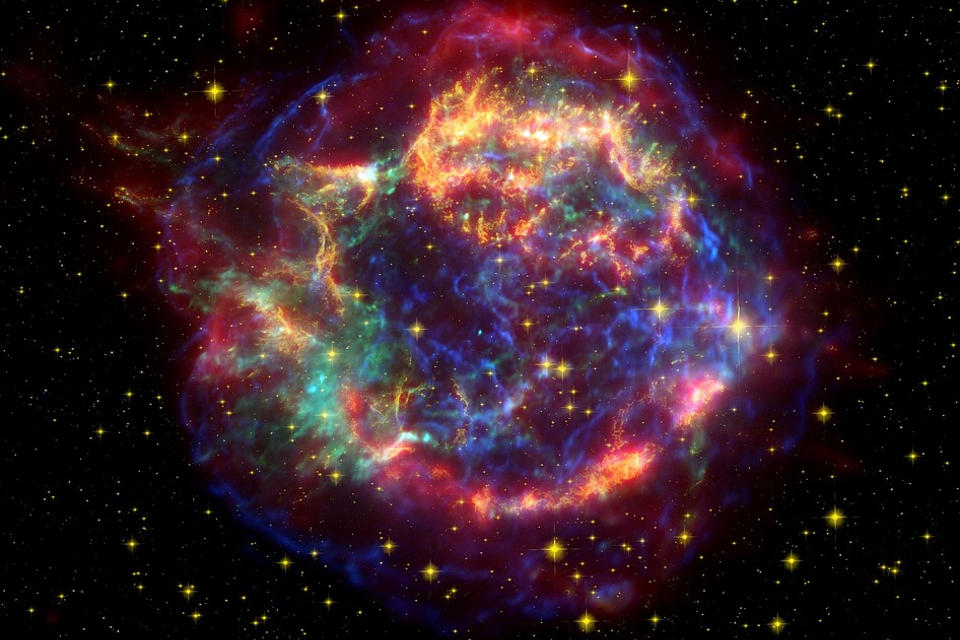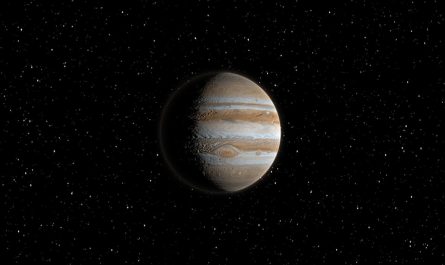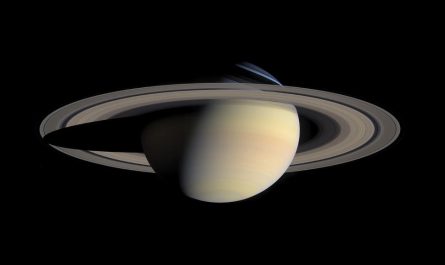What is a supernova? A supernova is what occurs when a star reaches the end of its life and explodes in an intense burst of light. Supernovae are so powerful that they radiate more energy than our sun will in its entire existence! Here are 5 brilliant supernova facts to help expand your space knowledge:
5 Supernova Facts
-
- If you are wearing a piece of gold jewelry, you may have supernovas to thank. (source) In 2021, scientists discovered a new type of cosmic explosion that is likely to have formed elements such as iron, gold, and oxygen in the oldest stars of our galaxy. The explosion, called a magnetorotational hypernova, is a type of spiraling, super-energetic supernova sparked by the collapse of a massive star.
-
- Heavy elements are only produced in supernovae, so we all have remnants of these ancient explosions within us. In fact, life would not exist without them. (source) Except for hydrogen and some helium created during the Big Bang, everything we (and the world around us) are made of were generated in stars through sustained fusion or in supernova explosions. Common elements such as carbon and nitrogen are created within the cores of most stars (through fusion of lighter elements). The heaviest elements, like iron, are only formed in massive stars and are released in supernova explosions. Without supernovae, life would not exist. Iron is in the hemoglobin of our blood which is essential for our ability to breathe.
-
- A supernova occurs somewhere in the universe every 10 seconds. (source) There are several types of supernovae. One type, known as a “core-collapse” supernova, occurs in the final stage of life for massive stars (at least eight times the size of our Sun). As these stars burn the fuel within their cores, heat is produced. This heat creates pressure that pushes outward against the forces of gravity that pull into the star. For the majority of the star’s life, inward gravity and outward pressure are in equilibrium, making the star stable. Once the star burns through all its fuel and begins to cool, pressure drops. When the pressure wanes low enough, gravity suddenly takes over and the star crumbles within seconds. This collapse is what causes the explosion known as a supernova.
-
- The oldest known recorded supernova dates back almost 2000 years. (source) In 185 AD, Chinese astronomers observed a bright light in the sky. They recorded that it sparkled like a star, appeared to be half the size of a bamboo mat, and remained stationary unlike a comet. Over the next eight months, it faded from sight. They called this celestial phenomenon a “guest star”. Two millennium later in the 1960s, scientists discovered hints of this mysterious “visitor” in traces of a supernova approximately 8000 light-years away. It became known as SN 185.
-
- Supernovae produce neutrinos, which are also referred to as ghost particles. (source) Neutrinos are by far the most abundant particles in the universe. With almost no mass and no electric charge, these tiny particles travel at near lightspeeds and are capable of passing through almost anything, even lead. About 100 trillion neutrinos pass through our bodies every second without interacting with any other particles. Not only are they produced during supernovae, they are also produced during the nuclear fusion processes that power the sun and other stars, in the radioactive decays that heat our planet, and in nuclear reactors. Despite their abundance, they are not yet fully understood. Scientists believe studying neutrinos could help solve important physics questions, such as the puzzle of why our universe is made of mostly matter (and not antimatter).




